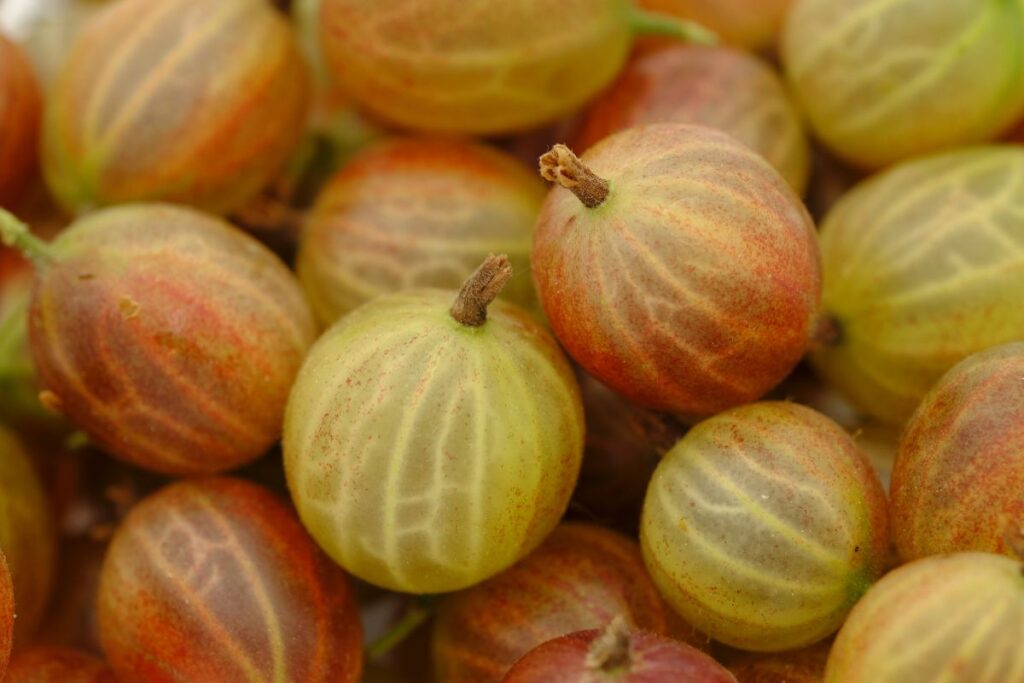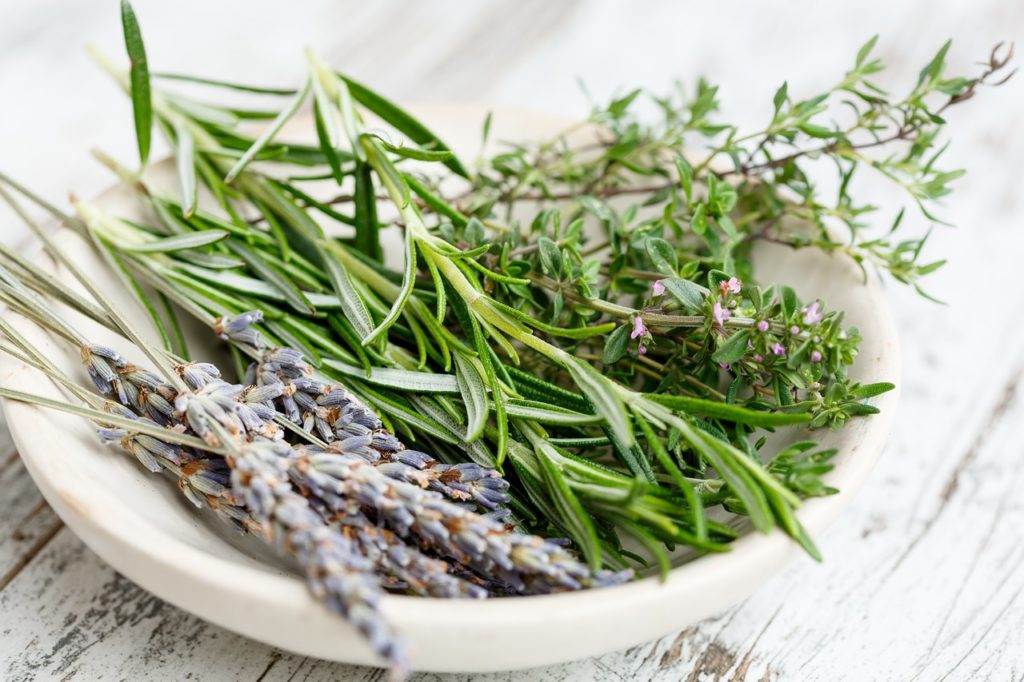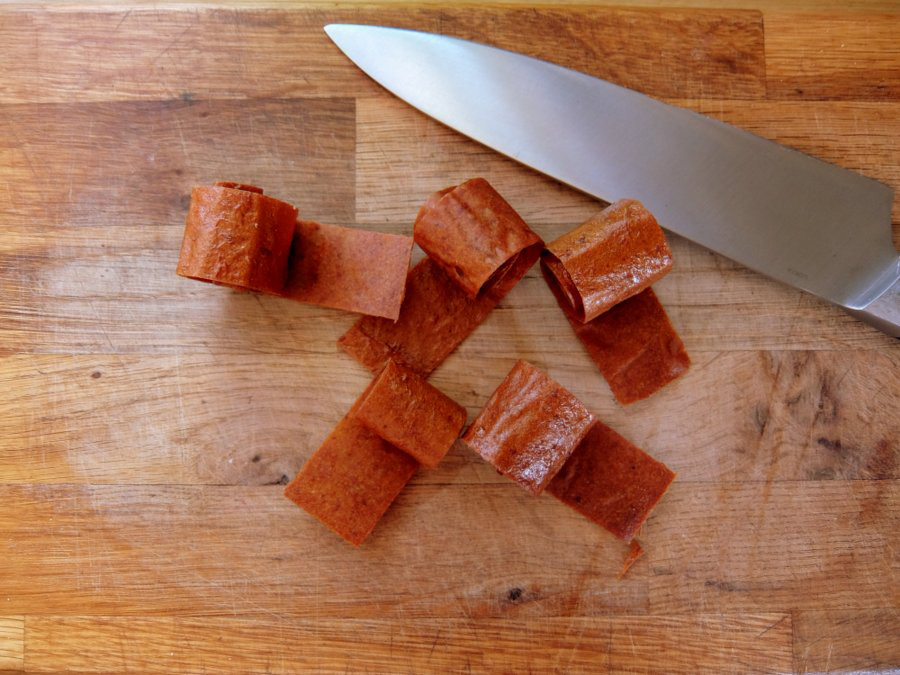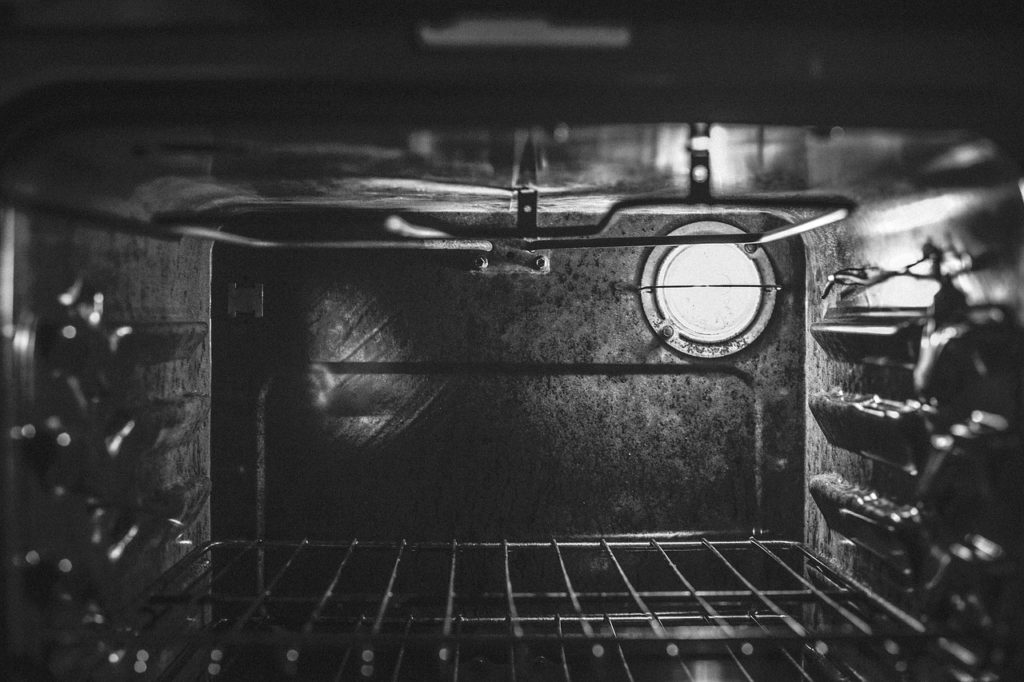Dehydrating fruits is a fantastic way to preserve their flavours and extend their shelf life. While most other berries are often the go-to choice for drying, don’t overlook the deliciousness of dehydrated gooseberries. In this article, we will walk you through the process of dehydrating gooseberries and you will see how easy it is to do.
Table of Contents
Why Dehydrate Gooseberries?
Gooseberries are not the easiest fruit to find. They are not cultivated as widely as other berries but I know a lot of people grow them or you can find them at farmers markets.
Dehydrated gooseberries offer a multitude of culinary possibilities. They can be used in baking recipes, rehydrated and added to cereals or oatmeal, or simply enjoyed as a healthy snack. By removing the moisture, you intensify the natural sweetness and tartness of the gooseberries, which makes each one a flavour-packed morsel.
Selecting the Right Gooseberries
When choosing gooseberries for dehydration, opt for ripe but firm berries. Avoid using soft or overripe gooseberries, as they won’t dry well and may result in a less desirable texture. They will also take much longer to fully dehydrate.
Preparing Gooseberries for Drying
Unlike larger fruits, gooseberries don’t require slicing or peeling but they do need pretreating which we will talk about in a moment. It’s essential to ensure the gooseberries are clean and dry. Remove any damaged or spoiled berries before proceeding with the drying process.
Pull off the stem part if there is any attached and the small tag on the end of the gooseberries where the flower would have been.
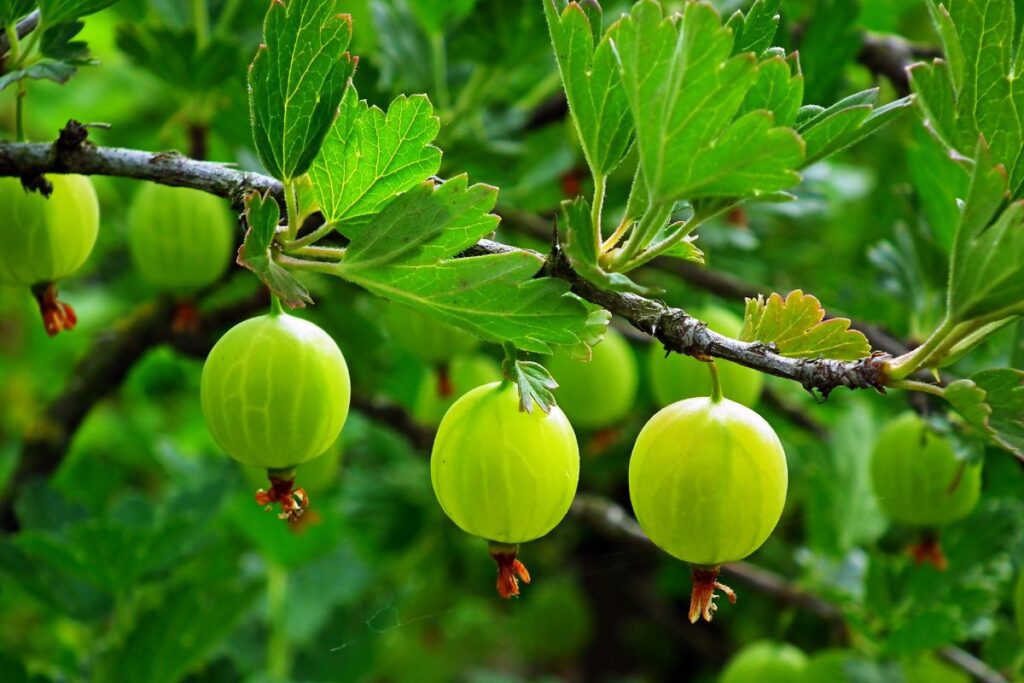
To Blanch or Not to Blanch?
While some fruits don’t require pre-treatment before drying, gooseberries can benefit from a quick blanching process. This step helps break the waxy skin, allowing moisture to escape during drying. If the skins are not docked it means the berries won’t dry properly and will be more likely to spoil later on.
There are a few options for pre-treating gooseberries:
- Freezing: If you have a large quantity of gooseberries, freezing is a convenient method. Simply spread the cleaned berries on a tray in a single layer and freeze them overnight. You can then dehydrate the frozen berries immediately or store them in an airtight container in the freezer until you’re ready to dry them.
- Slicing: If you don’t mind dried gooseberry halves, slicing them in half can help moisture escape more easily. This method is suitable for smaller batches but can be laborious if you have a significant amount of berries to dry.
- Syrup Blanching: Syrup blanching is my favoured method for pre-treating gooseberries. Prepare a 2:1 syrup by heating two parts water to one part sugar until it simmers. Add the gooseberries to the syrup and blanch them for about two minutes. Remove the berries and rinse them under cold water. Arrange the blanched gooseberries on drying racks.
- Water Blanching: While not recommended, water blanching can also be used. However, be cautious as gooseberries tend to become soft and mushy when water blanched. Blanch them in boiling water for about 30 seconds, then immediately cool them in ice water. Proceed to dry the berries.
Drying Gooseberries in a Dehydrator
A food dehydrator is the most efficient and convenient method for drying gooseberries. These appliances are relatively inexpensive and well worth the investment if you plan to dehydrate fruits regularly.
To dehydrate gooseberries in a dehydrator:
- Arrange the pre-treated gooseberries on the dehydrator racks in a single layer, leaving space between them for proper airflow.
- Set the dehydrator to a low to medium temperature setting, typically around 50-60°C.
- Allow the gooseberries to dry until they reach the desired texture. Halved gooseberries may take approximately 6-8 hours, while syrup-blanched berries can take anywhere from 12-18 hours. The extra time is worth it if you prefer more of a treat as the gooseberries will be more like candy.
Dehydrating Gooseberries in an Oven
If you don’t have a dehydrator, you can still achieve great results by using a regular oven. However, keep in mind that ovens are less efficient for dehydration.
To dehydrate gooseberries in an oven:
- Invest in additional oven racks to maximize the amount of gooseberries you can dry simultaneously.
- Use a fan or convection oven setting to ensure proper airflow, which is crucial for dehydrating fruit.
- Arrange the pre-treated gooseberries on the racks, allowing air to circulate around them. Avoid using trays, as they may cook the berries instead of drying them.
- Set the oven to the lowest temperature, ideally around 55-60°C, and monitor the drying process.
- Depending on your oven’s airflow and temperature consistency, drying gooseberries completely may take between 7 and 18 hours. Keep an eye on them to prevent over-drying.
The Perfect Temperature for Dehydrating Gooseberries
Whether you’re using a dehydrator or an oven, aim for a temperature range of 50 – 60°C for optimal gooseberry dehydration. This temperature range allows for gentle drying without compromising the flavour and texture of the berries.
Remember, along with temperature, airflow is crucial for even drying. Dehydrators typically have built-in airflow systems, ensuring consistent drying. However, if using an oven, rotate the racks every few hours to promote even drying.
Testing for Dryness
To determine if your gooseberries are fully dehydrated, perform a simple squeeze test. The berries should feel leathery and have no moisture inside. If they still feel soft or pliable, they need more drying time.
Storing Dehydrated Gooseberries
Once your gooseberries are perfectly dried, it’s time to store them properly to maintain their quality. Place the dehydrated gooseberries in an airtight container or resealable bags. Store them in a cool, dark place to preserve their flavour and extend their shelf life. When stored correctly, dehydrated gooseberries can last up to 6 months.
Enjoying Dehydrated Gooseberries
Dehydrated gooseberries offer a burst of tangy sweetness and make a versatile ingredient in various recipes. Add them to baked goods like muffins, cakes, or cookies for a delightful twist. Rehydrate them by soaking in water or juice and use them in porridge, muesli, or trail mixes. Of course, they are also perfect for snacking on their own, providing a healthy and flavorful treat.
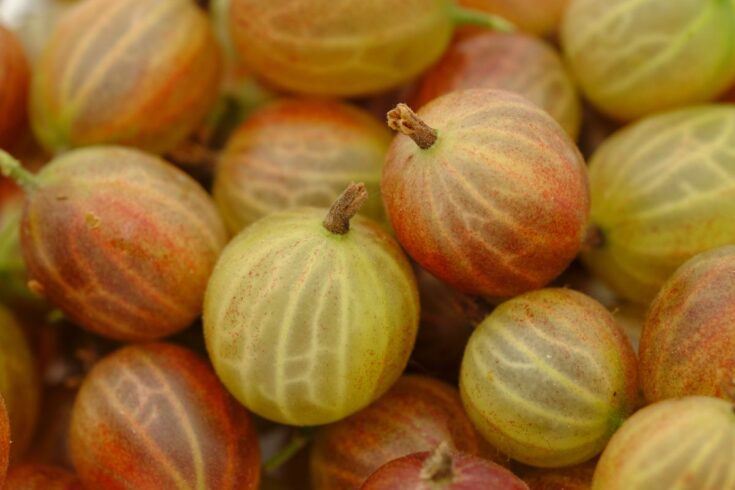
Dehydrating Gooseberries - How To Dry Gooseberries In A Dehydrator Or Oven
If you're looking to preserve the tart and tangy flavor of gooseberries for a longer period of time, dehydrating them is a great option. This simple and easy process involves removing the moisture from the fruit, resulting in a concentrated and chewy snack that can be enjoyed on its own or used in various recipes.
Ingredients
- Fresh gooseberries
- Water
- Sugar (optional)
Instructions
- Rinse the gooseberries under cold water and remove any damaged or spoiled berries. Dry them thoroughly with a clean towel or paper towel.
- Pre-treat the gooseberries by using one of the following methods:
- Freezing: Spread the cleaned berries on a tray in a single layer and freeze them overnight.
- Slicing: Slice the gooseberries in half to help moisture escape more easily.
- Syrup Blanching: Prepare a 2:1 syrup by heating two parts water to one part sugar until it simmers. Add the gooseberries to the syrup and blanch them for about two minutes. Remove the berries and rinse them under cold water.
- Water Blanching: Blanch the gooseberries in boiling water for about 30 seconds, then immediately cool them in ice water.
- Arrange the pre-treated gooseberries on the dehydrator racks or oven racks in a single layer, leaving space between them for proper airflow.
- Set the dehydrator or oven to a low to medium temperature setting, typically around 50-60°C.
- Allow the gooseberries to dry until they reach the desired texture. Halved gooseberries may take approximately 6-8 hours, while syrup-blanched berries can take anywhere from 12-18 hours. Keep an eye on them to prevent over-drying.
- To determine if your gooseberries are fully dehydrated, perform a simple squeeze test. The berries should feel leathery and have no moisture inside. If they still feel soft or pliable, they need more drying time.
- Once your gooseberries are perfectly dried, store them in an airtight container or resealable bags. Store them in a cool, dark place to preserve their flavour and extend their shelf life. When stored correctly, dehydrated gooseberries can last up to 6 months.
Nutrition Information:
Yield:
4Serving Size:
1Amount Per Serving: Calories: 21Total Fat: 0gSaturated Fat: 0gTrans Fat: 0gUnsaturated Fat: 0gCholesterol: 0mgSodium: 3mgCarbohydrates: 5gFiber: 2gSugar: 1gProtein: 0g
